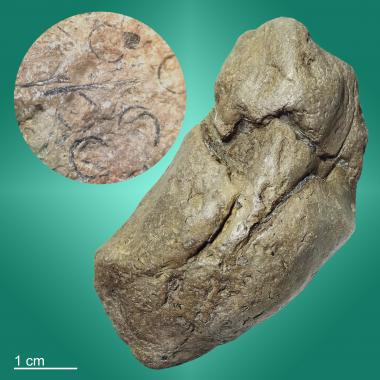
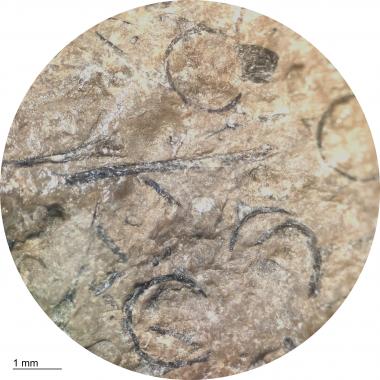
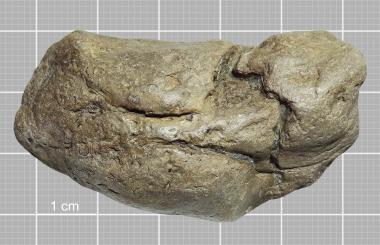
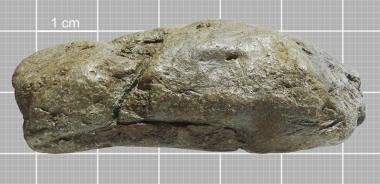
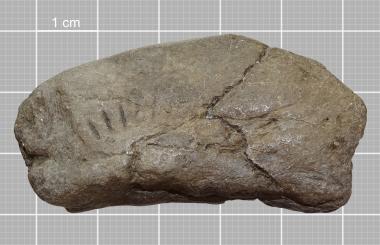
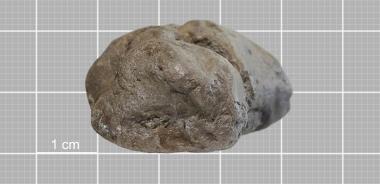
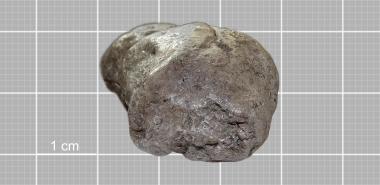
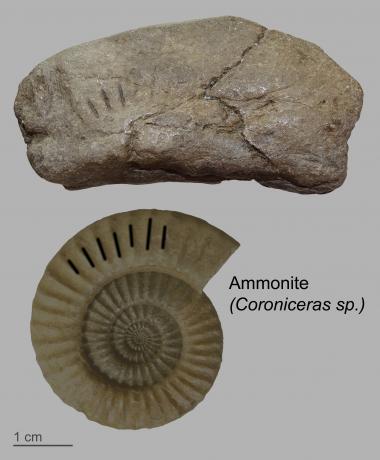
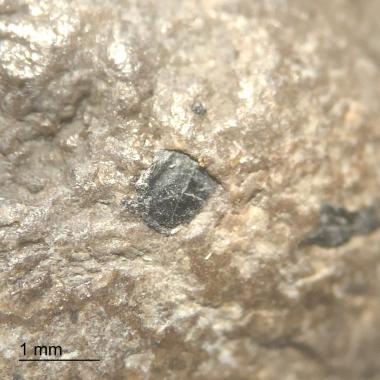
Coprolites of this type are usually attributed to marine reptiles such as ichthyosaurs, primarily because their fossils are so prevalent in the area. The hint of a folded or scroll structure could mean it is from a fish. Unless the specimen is cut, there is no way to know for sure.
This fossilized fecal sample contains the numerous ring-shaped inclusions. In 1829, William Buckland discussed this type of feature in a lecture On the Discovery of Coprolites, or Fossil Faeces, in the Lias at Lyme Regis, and in other Formations. He found that almost fifty percent of the coprolites from this area contained circular surface features like these. He attributed them to the rings on the suckers of cephalopod limbs, but also pointed out that small fish with vertebrae of the same size and shape were also found in the same sediments.
Apparently, the fresh fecal matter came to rest on the shell of an ammonite. The impressions on the bottom of the coprolite closely match with the ribs on the shell of a Coronicera ammonite.
